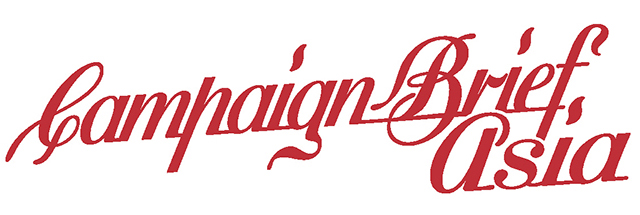dentsu’s Hazel Lin: From “revenge travel” to resonant journeys: How brands can drive loyalty in the age of experience-first customers

By Hazel Lin, Strategy Director, Media, dentsu Singapore.
In the wake of post-pandemic “revenge travel,” the tourism industry saw record- breaking spikes in booking volumes, occupancy rates, and long-haul spend.
However, the landscape has shifted as we fast-forward to mid-2025: inflationary pressure, geopolitical instability, and a more climate-conscious consumer have collectively reset expectations. Volume-driven growth has plateaued. What is emerging is a new growth lever: experience equity.
Travellers no longer aspire to collect stamps or rack up flight segments, they want meaning, personalisation, and alignment with their values. We have entered the era of resonant journeys: slower, story-rich, digitally tailored experiences that deliver emotional ROI.
For travel and hospitality brands, this has to be a strategic pivot. Staying relevant now means shifting from product-led marketing to purpose-led, CX-centric brand building.
From FOMO to focused travel
Today’s traveller is not driven by fear of missing out, but by a deeper yearning for connection, purpose, and authenticity. Travel, once a status symbol or escapist luxury, is now evolving into a deeply personal, emotionally resonant pursuit. Safety, sustainability, and suitability have overtaken sheer escapism. Where people once asked, “Where can I go next?” they now ask, “Why am I going?” There is a shift from ticking off destinations to crafting meaningful experiences, and the travel industry is taking note.
Same wanderlust, new intentions
While the motivations for travel – escape, celebration, discovery – have not changed, the ways we pursue them certainly have. The old habits of mass tourism are giving way to more individualistic, purpose-led choices.
The mindshift: From checklist to connection
1. Safety, sustainability, suitability
Political volatility and climate extremes are pushing travellers to scrutinise destinations through a risk and responsibility lens. A breathtaking landscape is no longer enough; it must also feel safe, treat locals fairly, and tread lightly on the planet.
2. Experiences>possessions
Souvenir magnets are out, memory making is in. Travelers want to cook with a Balinese grandmother, volunteer on a turtle conservation beach, and collect stories they can bring home, not trinkets.
3. Off-the-beaten-path is the new mainstream
TikTok has turned iconic sites into crowd traps. The savvy traveller now targets “second cities,” rural hamlets, and ecolodges, places where authenticity has not been airbrushed for Instagram.
Strategic imperatives for travel marketers
To win in this landscape, travel brands must reframe their value proposition. From inventory to identity, transactions to transformation, occupancy to emotional occupancy.
1. Evolve from accommodation to experience design
The hospitality brand of the future is not just a place to stay – it is a platform for personal narrative creation. Brands can:
• Integrate experience layers (cultural, culinary, ecological) into the core offering.
• Use dynamic product bundles, for example, accommodation + local maker workshop + late checkout for reflection time.
• Treat the hotel as a cultural hub, from rooftop dinners with local growers to in-room playlists curated by regional artists.
2. Activate personalisation through AI and predictive insights
Modern travel marketing demands more than retargeting. The opportunity is to build adaptive, always-on experience engines powered by intent signals, affinity modelling, and real-time behavioural data:
• Leverage CDPs and machine learning models to segment users beyond demographics — build psychographic clusters like “eco-ritual seekers” or “story- first solo travellers.”
• Deploy dynamic creative optimization (DCO) across programmatic, showing differentiated offerings tied to the traveller’s mindset.
• Implement multilingual AI concierges for real-time itinerary optimisation, hyperlocal recommendations, and in-trip upselling.
3. Use storytelling as a differentiation strategy
With price parity and feature fatigue across online travel listings, narrative becomes the new moat. The best-performing travel brands are embracing a content-first commerce model — capturing share of imagination before share of wallet. To generate brand affinity, brands should:
• Invest in short-form storytelling across TikTok, YouTube Shorts, and Reels, using local voices and guests to drive cultural fluency.
• Prioritise UGC and real-time testimonials to build trust and relatability.
• Collaborate with niche creators and interest-based influencers (e.g. dark-sky photographers, food anthropologists, regenerative travel advocates) who drive higher engagement than celebrity campaigns.
4. Design for loyalty loops, not linear funnels
Today’s travel path to purchase is non-linear. The inspiration phase is always-on, the conversion window is short, and the post-experience sharing cycle can re-ignite the funnel for others. To build emotional resonance, brands should:
• Build modular experiences designed for shareability and reactivation.
• Use post-trip Net Promoter Score (NPS) and sentiment analysis to trigger advocacy loops — incentivise guests to become storytellers.
• Create moments that surprise-and-delight, such as, hand-written notes, social shoutouts, or digital memory books that turn guests into fans.
What success looks like:
• Higher NPS and Customer Lifetime Value: Personal relevance drives loyalty and Lifetime Value uplift.
• Increased brand salience: Consistent emotional storytelling builds mental availability.
• Reduced price sensitivity: When guests feel known, they stop comparing rates.
• Repeat and referral lift: Experiences designed to be remembered and recommended.
The next decade of travel marketing will be won by brands who understand the cultural code, read emotional intent, and deliver curated experiences that align with who the traveller wants to become.
